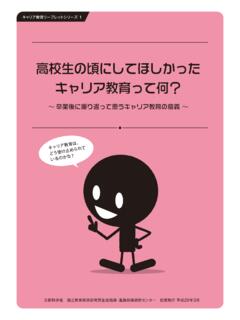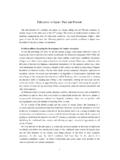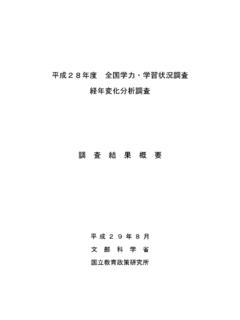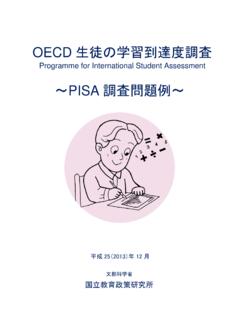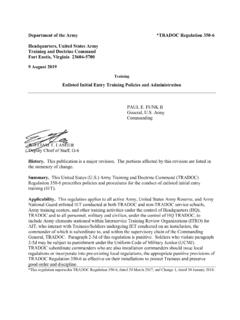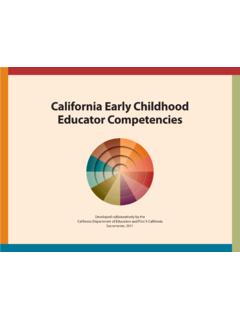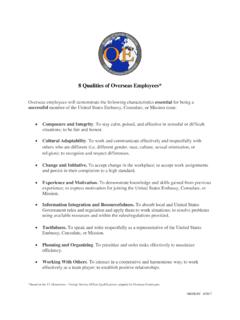Transcription of Special Needs Education in Japan - NIER
1 1 Special Needs Education in Japan The Convention on the Rights of Persons with Disabilities was adopted at the 61st United Nations General Assembly session held in December 2006 and came into effect in May 2008. Japan signed this convention in September 2007 and is now preparing for its ratification. A convivial society refers to a society where people with disabilities, who conventionally were not necessarily in an environment where they could fully participate in the society, can actively participate and contribute to the society.
2 A convivial society is an all-citizen-participating society where everybody respects each other s personality and individuality, supports each other and accepts the differences among people. In regard to the Education for children with disabilities, Japan has made the decision to aim at forming an inclusive Education system for building a convivial society. According to the report of the Special Committee on the Future Direction of Special Needs Education of the Subdivision on Elementary and Secondary Education of the Central Council for Education , an inclusive Education system refers to a system that enables children with and without disabilities to study together under the aim of developing respect for the differences in people and maximally developing the mental and physical abilities of children regardless of the presence or absence of disabilities.
3 And to realize a free society in which every person can effectively participate. Conventionally, Education for children with disabilities in Japan has focused on providing substantial and detailed Education by instructing at Special institutes and settings, such as Special Schools for the Blind, Special Schools for the Deaf, Disabled Schools, and Special Education Classes, according to the types and degrees of their disabilities. Concerning the circumstances surrounding Education for people with disabilities, there has been a shift in recent years to a more convivial society where every citizen, regardless of the presence or absence of disabilities, respects and supports the personality and individuality of others.
4 For this reason, there is a need to shift the Education system for students with disabilities from the conventional Special Education , where they are instructed in Special settings according to the types and degrees of their disabilities, to a Special Needs Education , where the educational Needs of each student with disabilities are grasped and appropriate educational support is provided, including support for students with Learning Disability (LD), Attention Deficit Hyperactivity Disorder (ADHD) and High-Functioning Autism (HFA), who attend regular 2 classes.
5 Furthermore, there is a need to prepare a framework for promoting this shift. 1. History From the Meiji Restoration to the Second World War In 1872, the Educational System was promulgated, becoming the foundation of Japan s public Education system. The system called for universal schooling with the aim of developing the abilities of citizens to strengthen national power. It includes a section that passively regulates schools for handicapped (Haijin Gakko). It is generally understood that, assuming from the common use of this term at the time, schools for the wasted must have referred to schools that accommodated children with visual, hearing, intellectual, physical/motor or other disabilities.
6 Nevertheless, despite the regulation of schools for the wasted for children with disabilities, under the educational principal of the time to increase national wealth and power, Education for disabled children was never provided. Prior to the Meiji Restoration, the foundation of life and skill training for people with disabilities were mainly provided by the support of communities. However, the social and economic changes due to the restoration caused a great blow to the lives of people with disabilities.
7 During this time of drastic social changes, the first private school for deaf and mute children in Japan was established by a private philanthropist in 1878. Thereafter a few schools for deaf and mute children were established privately and were later turned into public schools. Schools for deaf and mute children were regulated as schools that align with elementary schools in the Second Revised Elementary School Ordinance (Gakusei) of 1890, and regulations were set out. In 1900, elementary school Education was made compulsory clearly by the regulation in the Third Revised Elementary School Ordinance.
8 Simultaneously, it was regulated that children with disabilities are exempt from or given a deferment for attending elementary school. For this reason, Education for children with disabilities relied on the efforts of private philanthropists and was mostly a charitable social service. Education for children with disabilities other than the deaf and mute children also started out from schools and institutes that were established privately. In 1906 the first institution for children with intellectual disabilities, and in 1921 the first institution for children with physical/motor disabilities were each established privately.
9 3 Under the Education system at the time, with the mission to develop national prosperity and defense , children with disabilities were not included in the framework. However, due to the efforts of interested parties, a demand rose for compulsory and public Education for children with disabilities. As a result, related provisions in the Elementary School Ordinance were separated out and expanded, and were promulgated in 1923 as the Schools for Blind, Deaf and Mute Ordinance. Though at this point the ordinance was limited to schools for blind, deaf and mute children, it triggered the transformation of such schools from a charitable social service to a public Education system.
10 In 1941, the National School Ordinance was promulgated to replace the Elementary School Ordinance with the aim of strengthening the Education system during the war. During the planning of the National School Ordinance, it was conceived to establish Special educational facilities for mentally and physically disabled children, and to make Education for deaf and mute children compulsory. However, such measures could not be executed due to financial and other reasons. However, the program for the schools for deaf and mute children was considered to be an equal or higher Education program in regard to the program of the national school (elementary school).

